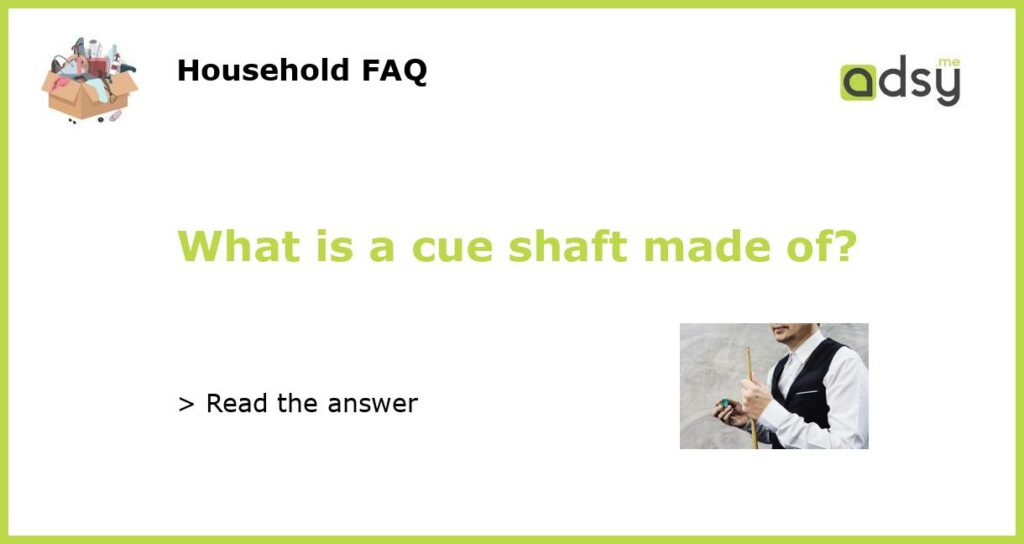Understanding Cue Shafts: What are They Made Of?
Cue shafts are a critical part of any billiards game. Made of various materials, they are the long, thin sticks that players use to strike the cue ball and hit their target. But what are cue shafts made of, and why does it matter? In this article, we’ll explore the different types of cue shafts available and what makes them unique.
Wooden Cue Shafts: Classic and Traditional
The classic cue shaft material, wood has been used for centuries to craft the perfect cue. Maple is a popular wood used to create cue shafts, and for good reason – it’s durable, strong, and has a consistent grain pattern. Other wood types used include ash, hickory, and birch. Wooden cue shafts can be customized and are often turned on a lathe to create unique designs and shapes, but they can also warp over time and require upkeep to stay in top condition.
Fiberglass and Graphite Cue Shafts: A Modern Twist
For players seeking durability and low maintenance cues, fiberglass and graphite shafts are a popular option. While they lack the traditional feel of wood, they are more resistant to warping and breakage. Fiberglass and graphite shafts also offer more consistency in terms of weight and balance, and some players prefer the smooth, slick feel they provide on the cue stroke.
Carbon Fiber Cue Shafts: The Future of Billiards
The newest innovation in cue shaft technology, carbon fiber is proving to be a game-changer in the world of billiards. Lightweight and incredibly strong, carbon fiber cue shafts are sought after for their precision and responsiveness. However, they come at a significant cost compared to traditional cues and may not be accessible to all players.
Choosing the Right Cue Shaft for You
Deciding on the right cue shaft material is a matter of personal preference and playing style. Traditionalists may prefer a maple or hickory shaft, while those seeking durability may opt for fiberglass or graphite. Carbon fiber is still relatively new in the world of cue shafts, but it’s quickly gaining popularity among serious players. Ultimately, the best way to determine your ideal cue shaft is to try out a few different materials and see which one feels the most comfortable and effective for your game.






